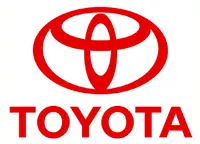Toyota receives the 2011 SAE Ralph H. Isbrandt Automotive Safety Engineering Award
 |
 |
Summary of the 1.5 year research project involving Toyota and NASCAR using Total HUman Model for Safety (THUMS)
ANN ARBOR, MI--Jan. 30, 2013: Toyota Technical Center (TTC), a division of Toyota Motor Engineering & Manufacturing, N.A. Inc. (TEMA) announced today that the Society of Automotive Engineers (SAE) has selected TTC - Robert Smith; Author, Toyota Motor Corporation (TMC) - Shigeki Hayashi, Yuichi Kitagawa and Tsuyoshi Yasuki; Co-Authors as the recipients of the 2011 SAE Ralph H. Isbrandt Automotive Safety Engineering Award.
The Isbrandt award annually recognizes the author(s) delivering the most outstanding paper at a Society or section meeting on the subject of automotive safety engineering. This honor recognizes their outstanding SAE technical paper #2011-01-1104- "A Study of Driver Injury Mechanism in High Speed Lateral Impacts of Stock Car Auto Racing Using a Human Body FE Model"; presented at the 2011 SAE World Congress. Mr. Tsuyoshi Yasuki will be accepting the award on behalf of the team at the SAE Government/Industry meeting today in Washington, DC.
The paper was the summary of the 1.5 year research project involving TEMA, TMC, and NASCAR, using the Total HUman Model for Safety (THUMS), Toyota's virtual human model, to investigate and simulate driver response and injury mechanism resulting from high speed crashes in the racing environment. The purpose of the study was to understand the internal mechanisms of injuries relating to specific seat geometries and to propose modifications to the cockpit/seat structure and/or restraint system in order to reduce the risk of injury, with a focus primarily and chest injury and rib fracture.
As a result of this research NASCAR has since updated their Official Rulebook, regarding Seat Chest Support Stiffness targets, and Seat Shoulder Support geometry. These changes may lead to a reduced risk of rib fracture injury for both Side and Frontal collisions in the high speed racing environment.


